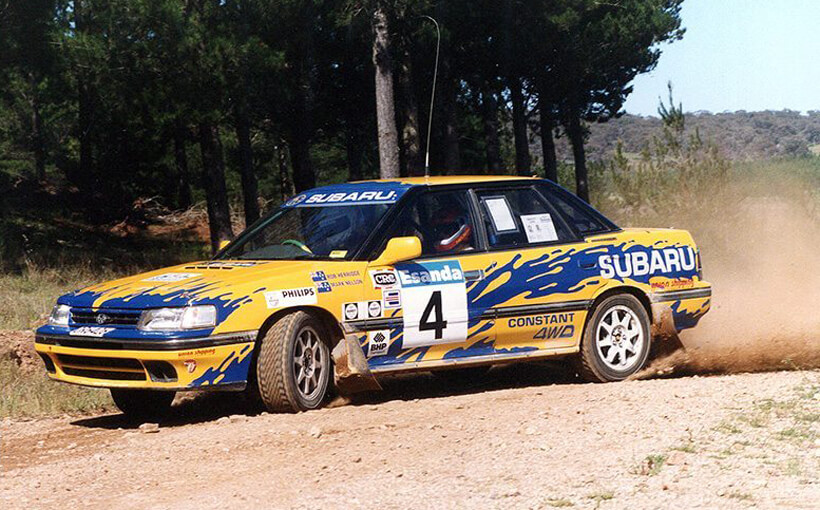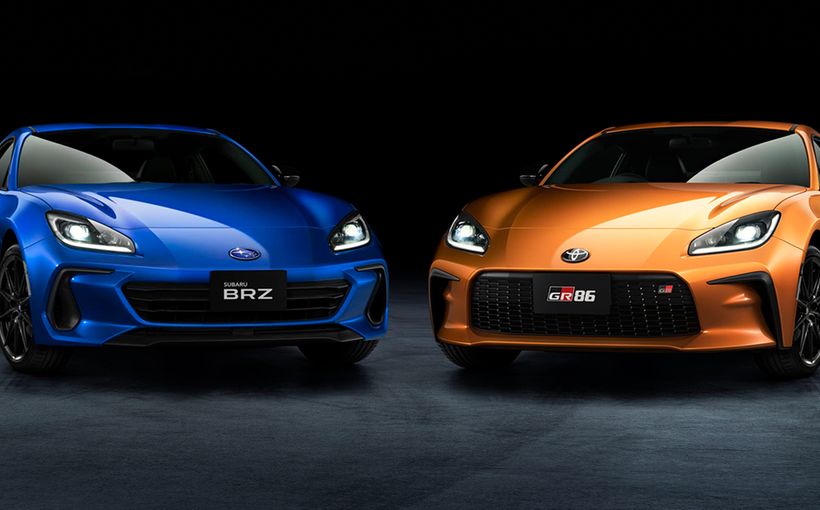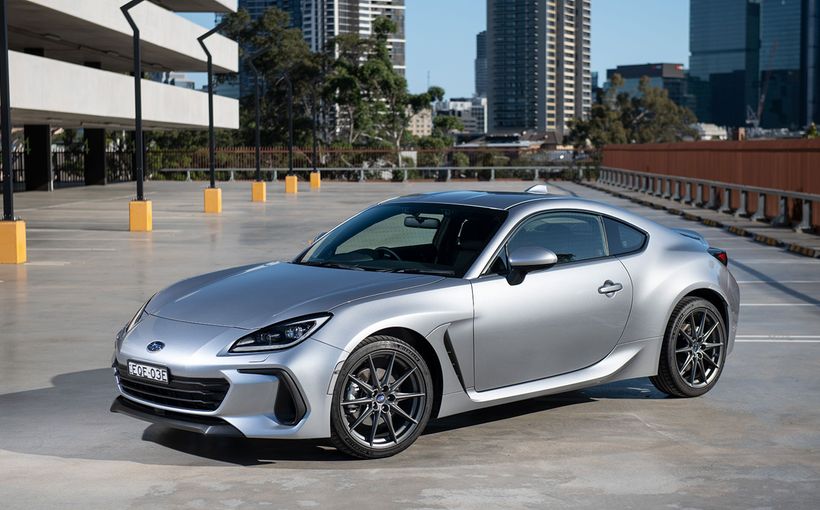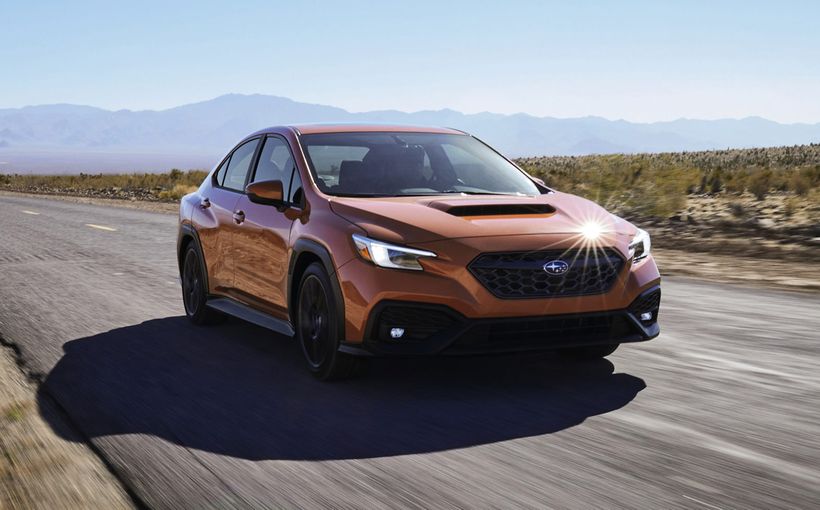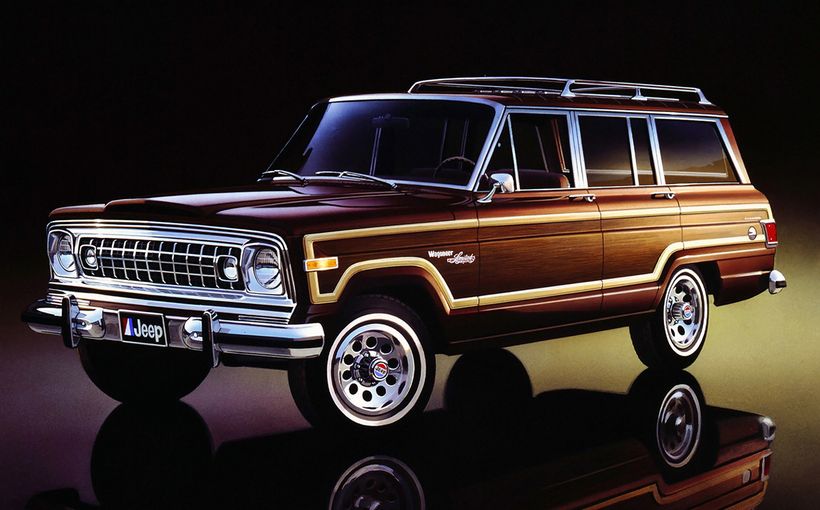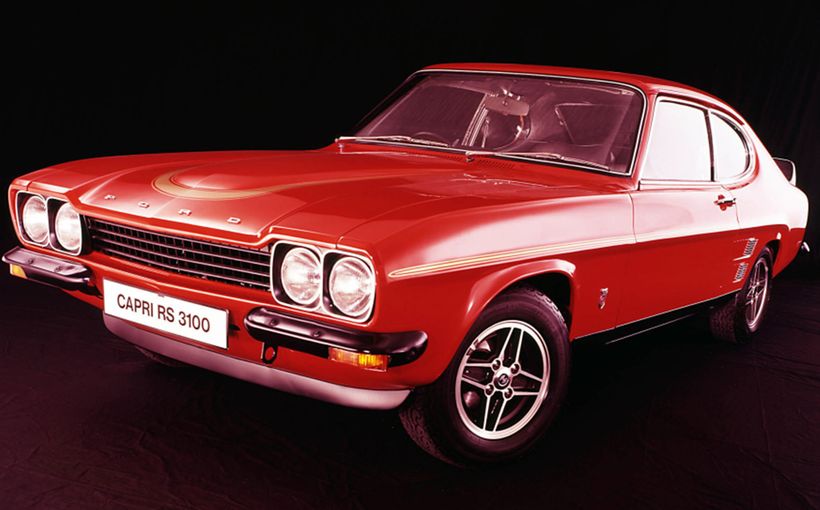Subaru Liberty RS Turbo: a multiple champion in its own right

Subaru’s Impreza WRX has achieved legend status after its phenomenal success in rallying across the globe. As a result, the car which laid the foundation for the mighty ‘Rex’ - the Legacy RS (renamed Liberty here in deference to Legacy Australia) – is often overlooked, even though it scored a breakthrough victory for Subaru in the World Rally Championship, won three British rally titles and claimed back-to-back Australian Rally Championships.
The first-generation Legacy was launched in 1989. It was an all-new model designed primarily to compete in North America’s lucrative mid-sized sedan market against numerous Japanese rivals like the Toyota Camry. With its 2580mm wheelbase and 4510mm overall length, the new Subaru was spacious and comfortable, with a choice of FWD or permanent AWD drivetrains.
Its flat-four ‘boxer’ engine was from a new engine family called the EJ series; a more refined and powerful evolution of the previous EA version. Available in a variety of capacities and configurations, the low centre of gravity offered by its horizontally-opposed cylinder layout contributed to excellent handling response. And, when combined with Subaru’s signature symmetrical AWD, it provided a level of roadholding superior to conventional rivals.
It was this excellent combination of chassis, engine and drivetrain in the hottest model in the new Legacy range - the turbocharged RS - which provided the basis of Subaru’s first serious WRC contender.

Legacy RS in the WRC
Subaru’s involvement in the World Rally Championship started in 1980 with the factory’s in-house Subaru Rally Team Japan under Noriyuki Koseki, who would later help establish Subaru’s own high performance tuning and motor sport division, Subaru Tecnica International (STi).
Armed with its factory-prepared Group A Leones, Subaru chose international rallying as the best way to showcase the traction advantages of its symmetrical all-wheel drive technology. The factory team (which did not compete in the ferocious Group B division) only competed in selected WRC events until 1987, when the WRC adopted Group A as its premier category and Subaru finally got serious.
With the establishment of STi in 1988, president Ryuichiro Kuze decided that competition development of Subaru’s new Group A rally car – the Legacy RS (Rally Sport) - would be accelerated by engaging the services of an established motor sport tuning firm. In 1989 he found one in UK specialist Prodrive, under charismatic team principal David Richards.
The British and Japanese teams soon merged into one Prodrive-managed operation under the Subaru World Rally Team (SWRT) banner. With Prodrive’s takeover, the factory team base also moved from Japan to the UK, while maintaining a close involvement with STi in Japan.

In 1990 Subaru’s first Prodrive-developed car, the Group A Legacy RS, was ready for WRC duty. Its potent 2.0 litre EJ20 flat four, armed with an intercooled turbocharger and DOHC cylinder heads with four valves per cylinder, was pumping out close to 300bhp.
An X-Trac five-speed (later six-speed) competition gearbox fed power to the permanent AWD system, featuring a viscous-coupling centre differential with slip-limited front and rear diffs. Beefed-up MacPherson strut front and rear suspension and massive ventilated disc brakes at each corner provided the handling and stopping power needed for WRC duty.
Even though Prodrive/STi trimmed a lot of weight from the Legacy, it was significantly larger in both wheelbase and overall length than its two main WRC rivals – the Toyota Celica GT-Four and Lancia Delta Integrale.
It was these key differences which ensured the new Subaru challenger faced an uphill battle from the start, in trying to topple its smaller - and therefore lighter and more agile - foes in the WRC. Even so, it showcased the fundamental strengths of Subaru’s design and Prodrive/STi’s competition engineering, which would reach new heights in its smaller Impreza-based successor.
The Legacy RS made its WRC debut in the third round of the 1990 championship. Later in the season the flying Finn Markku Alen competed in four more rounds, nailing the team’s best result of the year with an encouraging fourth place in Finland’s 1000 Lakes Rally.

Alen went one better in 1991, scoring the Legacy RS’s first WRC podium in Sweden with third place. However, that was also the only podium for Subaru that year, which also saw new drivers trialled including world champion Ari Vatanen and Scotland’s 23-year-old rising star Colin McRae.
Although McRae crashed out of Britain’s RAC Rally in his WRC debut, the flying Scot and navigator Derek Ringer did claim the prestigious British Rally Championship in 1991, winning four of six rounds in a Legacy RS entered by the Rothmans Subaru UK Rally Team.
SWRT continued to sharpen the Legacy RS’s competitive edge in 1992. Even though it competed in only seven of the 14 WRC rounds, the decision to make Vatanen and McRae full-time drivers paid dividends with each scoring a second-place finish.
McRae and Ringer in a Legacy RS added more polish to Subaru’s best season with another British Rally Championship in 1992, winning all six rounds for the Rothmans Subaru UK Rally Team in a faultless performance.
The fourth and final WRC season for the Legacy RS in 1993 was also its finest. McRae made an historic breakthrough in New Zealand, round eight of the 13-round calendar, by scoring Subaru’s first WRC victory. It was also the Scot’s first WRC win and the first long-awaited triumph for the Legacy RS.

Another rising British talent, Richard Burns, also won the British Rally Championship in 1993 to give the Legacy RS a hat-trick of BRC titles. Those wins, in addition to its single WRC victory and five podiums, showed how effective this car had been for Subaru.
Although its WRC and BRC achievements hogged most of the international motor sport headlines in the early 1990s, the same car enjoyed similar success on the other side of the globe.
With the lightning fast Kiwi Possum Bourne behind the wheel, a works-entered Legacy RS won the 1993 Asia-Pacific Rally Championship, which was of immense importance to Subaru given the high regard in which it is held amongst Japanese manufacturers. And in Australia the Legacy RS (Liberty RS) also scored important victories in the nation’s premier rally competition.

Australian Rally Championship: two out of two for Subaru
1991 ARC
The new Subaru made its ARC debut in 1991, when privately-entered examples driven Rob Herridge and David Eadie were outright contenders for the championship against AWD rivals including Murray Coote’s Mazda 323 GTX and Neal Bates’ Toyota Celica GT-Four.
The Liberty RS made an inauspicious start at the opening round in Tasmania, with Herridge suffering brake trouble before retiring with a blown turbo. Coote and navigator Coral Taylor ran away with the event.
The Mazda crew did it again in Victoria’s rugged Alpine Rally, which Herridge led at one stage before running off the road and damaging a lower control arm. This dropped him out of winning contention but he did recover to finish third.
Western Australian rally star Ross Dunkerton made a one-off appearance in WA’s round three in a works Galant VR4, as Mitsubishi Ralliart was using it as a test session for the forthcoming Asia-Pacific Rally Championship.

Dunkerton won all but one of the 18 stages to score a crushing victory over Herridge, who was not impressed by Dunkerton’s showing as it robbed him of valuable ARC points. Even so, it was a good result for the Subaru driver, as he finished one place ahead of Bates’ Celica while Coote dropped out with engine trouble.
Coote failed to finish again in South Australia’s fourth round, leaving the Liberty RS Turbos of Herridge and Eadie to fight for victory. However, Eadie suffered a blown turbo leaving Herridge to win by a comfortable margin. Bates had another difficult rally in the Celica, but did well to salvage third place.
With two rounds remaining, Herridge was leading the points chase with Coote and Bates still within striking distance. Coote needed to win NSW’s round five to keep his championship hopes alive, but a puncture and gearbox trouble dropped him out of contention.

This triggered another Subaru battle for the lead between Herridge and Eadie, until Eadie crashed out in spectacular style. Even though Herridge won, Eadie’s exit allowed Bates to move up to second and retain an outside shot at winning the ARC in the sixth and final round in Queensland.
If Bates won, Herridge needed to finish fifth or better to win the ARC. If Bates finished second, Herridge only had to finish ninth or better. Bates clearly had a tougher assignment, but in rallying it’s never over until it’s over!
Coote returned to winning form in his Mazda, but third-placed Herridge’s focus was on the second-placed Bates’ Celica which was less than 1min 30secs ahead of him at the end of the first day. It was all looking good for the Subaru driver until things started to unravel, triggering a chain of events that would ensure a painfully drawn-out conclusion, as described in Chevron Publishing’s 1991 Australian Motor Racing Year report:

“Special stage 29 was the beginning of Herridge’s trouble. He hit a bank which broke the strut assembly on the left rear of the Subaru. He struggled out of the stage where a Liberty chase car was on hand to account for such problems.
“At the end of the (second night’s stages), when most of the cars had made it back to parc ferme, Herridge’s Subaru was missing. A ball joint had broken near the end of the last stage as a result of the collision with the bank earlier in the event. Herridge made it to the end of the stage, where the problem was fixed, but he was judged to be out of late time.
“A 60-minute penalty was imposed upon him, which dropped him to 25th place and out of contention for any points. The penalty was successfully protested and Herridge was initially awarded with third place and the ARC.
“Bates appealed and the penalty was re-imposed and Bates was declared provisional Australian Rally Champion. Herridge appealed and counter-protested Bates’ entry for the rally, claiming Toyota owned the car and was therefore not eligible to score points as Toyota did not hold an entrant’s license.”
Although the 1991 championship concluded in July, by the end of the year the final outcome of the ARC was still anyone’s guess, with no sign of an impending decision by governing body CAMS. Such a farcical situation prompted Bates to quip that the way things were going, the 1992 ARC would be decided before the 1991 championship – and he was right!

1992 ARC
Amazingly, it took until one week after Rob Herridge won the 1992 ARC in his Liberty RS Turbo that the final appeal tribunal decision on the 1991 ARC was handed down in his favour, after more than a year of deliberation by CAMS. So, in the space of seven days, Herridge won two ARC titles!
Thankfully the 1992 championship was not spoiled by such a ludicrously long conclusion. In fact, it was quite the opposite, with the original schedule of six events reduced to five after Herridge sealed his second championship in the fifth round. Competitor interest in the sixth and final round in Tasmania was so poor that it was cancelled.
Herridge was a deserving winner, given that Subaru Australia showed admirable commitment with a big budget two-car team of Liberty RS Turbos presented in an eye-catching yellow with contrasting blue ‘mud splashes.’
While Herridge’s car was in showroom standard Group N trim, the other driven by lightning fast Kiwi Possum Bourne was a LHD state-of-the-art WRC Group A rocket built by Prodrive. Such a potent car and driver combination was expected to dominate, given that Neal Bates’ new ST185 Celica GT-Four and Murray Coote’s Mazda 323 GTX were both devoid of factory support.

As expected, Bourne and navigator Roger Freeth set blistering early stage times in Victoria’s opening round, the Alpine Rally, only to withdraw soon after with a blown turbo. Coote then led in the Mazda before retiring with gearbox trouble, handing the lead and eventual win to Herridge.
Bourne came out swinging in WA’s round two, again setting fastest times on the first three special stages before retiring on the fourth, this time with a broken camshaft drive-belt. Team-mate Herridge in the more sedately-tuned Group N Liberty RS inherited the lead and claimed another victory ahead of two Galant VR4s.
As the ARC field assembled in South Australia for round three, a classic ‘hare and tortoise’ tale was unfolding in the Subaru camp, with Herridge in the reliable showroom stock Group N car looking a more likely champion than Bourne in the much faster - but more fragile – Group A weapon
Ross Dunkerton made another of his one-off appearances for Mitsubishi Ralliart in a Group A Galant VR4, this time joined by team-mate and ARC champion Ed Ordynski in a Group N Galant VR4 in a joint competitive shakedown for the WRC Rally of New Zealand.

However, this time Subaru clearly had the upper hand, Bourne easily outpacing Dunkerton with a string of fastest stage times (and some welcome reliability) to easily win the event and gain his first ARC points. However, Ordynski balanced the ledger for Mitsubishi by defeating Herridge in their Group N fight to finish third and fourth overall.
In Queensland’s round four, Neal Bates finally got it all together to score his first ARC victory and the first of many for the Celica GT-Four. Early leader Bourne was left stranded by a loose battery lead during the night stages which cost him any chance of victory. His consistent team-mate Herridge finished second, earning enough points to be in a position to win the title in round five.
The biggest surprise in NSW’s fifth round was the victory by Galant VR4 driver Craig Stollard, making his first appearance in the ARC. The unlucky Bourne once again was the early pace-setter before rolling due to brake failure. Bates also retired with engine trouble, leaving Herridge to finish in a comfortable second place and wrap up his second ARC title in fine style.
In summary, the Legacy/Liberty RS Turbo may not be as revered as its Impreza WRX successor, but it was a very successful rally car in its own right. It also served as a crucial test-bed for the design and development of its smaller, lighter and faster Impreza replacement and played a pivotal role on achieving Subaru’s dream of global rallying success.

